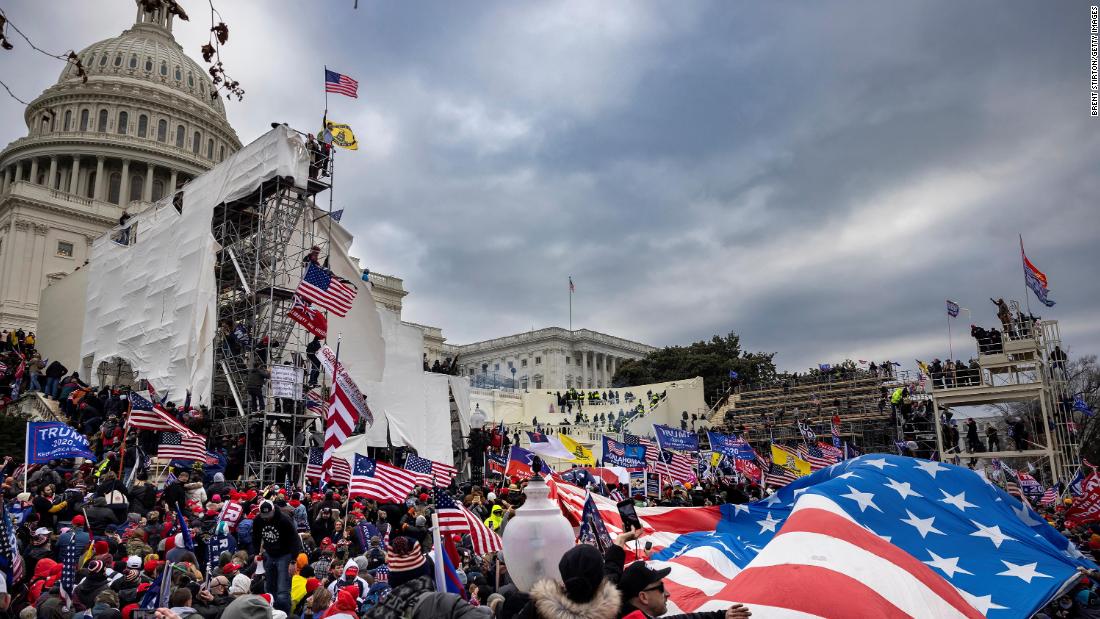The decision is the latest in an ongoing struggle for the public to see the brutal moments of the insurgency up close, as Republicans and former President Donald Trump try to recast the January 6 hijacking of the US Capitol by the Trump supporters as far-right victimization.
CNN and 14 other outlets filed a lawsuit for access earlier this month because many of the videos had become public records in court.
The videos “have thus far played an important and meaningful role in the decision-making process in many Capitol cases, with extensive discussion of these exhibits in the government briefing, screening of the video exhibits before or during detention hearings before the Court, and thorough consideration of these exhibits by the Court,” Chief Justice Beryl Howell of the DC District Court wrote on Friday.
However, the video output floodgates will not open immediately.
Because the videos of the defendants attacking the Capitol and its protectors focus on “particularly egregious or inflammatory” moments, Howell did not take a general policy of public access. She also noted that releasing all videos of court proceedings before a trial could harm future juries.
Media will therefore have to request video from the court on a case-by-case basis, Howell wrote in a notice published Friday.
At least 430 Capitol riot defendants have been arrested, according to the Justice Department, and all federal cases are progressing in DC District Court. So far, only one defendant has pleaded guilty and agreed to cooperate.
Many others are expected to plead guilty and avoid trial, as is common in the courts, but some may push for jury trial as they try to maintain their innocence. Hours of video footage collected by investigators could be released during these trials.
So far, Justice Department prosecutors have used videos to illustrate what they say were the defendants’ most dangerous actions on Jan. 6, particularly in cases where Trump supporters assaulted police.
The Justice Department previously released footage from an officer’s body camera used in court to show the alleged assault of Capitol Police officer Brian Sicknick, who died the next day, after CNN and others media have taken legal action to have him released. Prosecutors had used the video in court to argue that two men who sprayed chemicals during the riot should remain in jail pending trial.
Illustrations for the public of other Trump supporters harshly beating the police came only in written words and still images. And the judges reacted strongly to the video clips, often commenting on how frightening the close-up views of police body cameras are on January 6.
A Metropolitan Police officer who was beaten and tasered during the riot, Michael Fanone, pleaded for the release of his body camera video and repeatedly criticized Republicans who tried to downplay the violence during the riot. insurrection.
CNN exclusively obtained Fanone’s body camera footage and released it publicly for the first time this week.

